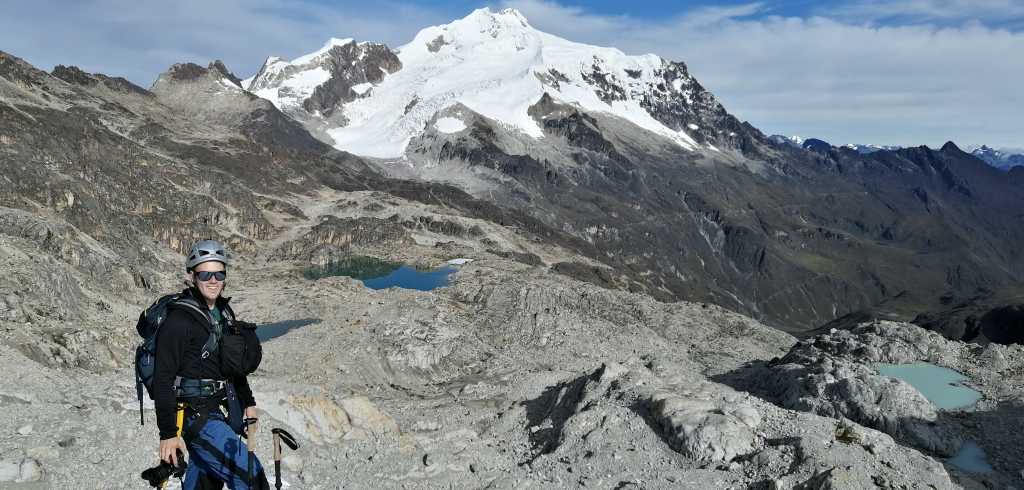Tips for acclimatizing in La Paz City

When we plan the ascent of high mountains we are faced with the uncertainty of whether we are going to be ableto acclimatize ourselves in a good way to the altitude, or not. To tell thetruth, there is no magic or scientific formula to acclimate, since each personhas their own conditions and times to adapt to this environment.
The main limitation for mostmountaineers is time, since it is not so easy to have enough days toacclimatize our body to the altitude. In theory, this process takes weeks, butthe time factor is our biggest problem.
The body begins to generate physiologicalchanges from 2,500m high, high level for many places in the world, but in the Andes is usually below the start of any of its mountains.
When ascending to these heights the body has two ways to adapt to the height:
• Increasing the body's abilityto deliver oxygen to muscles.
• Increasing the efficiency inwhich muscles use oxygen.
The first is done naturally, the second is only achieved through training and physical preparation.
Currently there are two methods to acclimatize to height. Only experience in high mountains will let you knowwhich is the most effective.
• Method 1: climb high and sleeplow (the classic way). For example, on a mountain such as Huayna Potosí /6088m. (the most popular mountain in the city of La Paz) where on the first day(classic itinerary) it goes from the city of La Paz / 3700m. until the basecamp of Huayna Potosi / 4700m. a big difference in a day, after settling in oneof the camps the mountaineers prepare their equipment and leave in a 45 minute walk to the old 4800m glacier. and they can do a basic mountaineering trainingfor 2 to 3 hours ascending to a maximum height of 4870m. to then return to therefuge in base camp / 4700m. . That walk allows you to do a little height and physical activity, then lower a bit and rest better. At higher altitudes it is more difficult to sleep and the body does not rest or recover trapped.
• Method 2: climb higher to sleep there. Then descend and recover at low altitude. Exactly the opposite of the first method this will demand an extra day depending on which mountains
These two methods are the most used among expert mountaineers and amateurs.
MY METHOD
Personally I think that if you are in La Paz City and you want to climb some of the classic mountains (HuaynaPotosi, Condoriri, Illimani, Sajama) it is better to do the preparation since you arrive in the city.
A day of walking through chacaltaya and the valley of the moon / combined itinerary
One day doing physical activity on mountain bike./ often distract the mind doing something fun (the psychology part is very important)
Organized treks towards the Autria peak / it is not necessary to demand to reach the summit, just to reachthe Chiar Kota lagoon is enough and enjoy the wonderful view.
Cultural visits to Tiwuanaku in the high land
2 days on Lake Titicaca visitingthe island of the sun.
These are some of the recommendedactivities to start acclimatization from the city.
Tips
The process of acclimatization isdifferent for each individual, some acclimatize faster than others.
• Stay well hydrated. Drink atleast 2 liters of water per day and if possible more.
• Do not eat heavy foods duringany activity. Avoid fatty foods and try to consume only carbohydrates.
Depending on the type of climbingif the expedition lasts many days will require a little fat for recovery
• The use of drugs such as Acetazolamide, also known as Diamox. It helps the process of acclimatization. But you have to have a lot in the use of it, since sometimes it hides the symptoms of acute mountain sickness and does not allow us to detect it in time.On the other hand, Diamox is a mild diuretic, but being a diuretic, it isnecessary to consider many waters or liquids of the aforementioned parameters.
• do not demand much in height.It is recommended to maintain a constant rate of ascent and not force the body to its limit. Take a reasonable time for recovery.
• These are just general tips,remember that each person has their rhythm and personal process ofacclimatization.
If you want to learn more aboutthe subject, we recommend the book "Mal de altura. Prevention andtreatment "of unevenness.